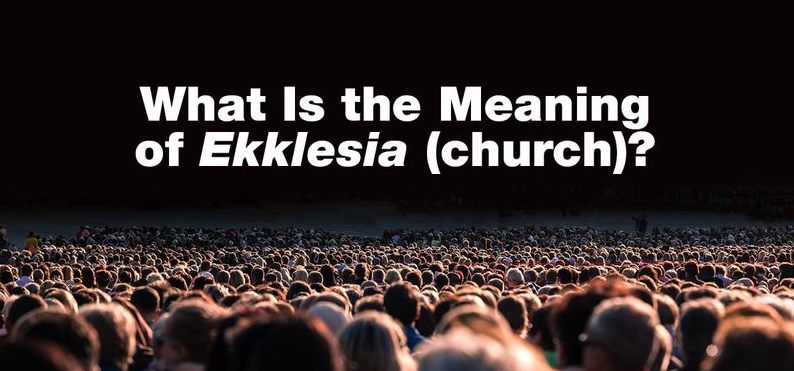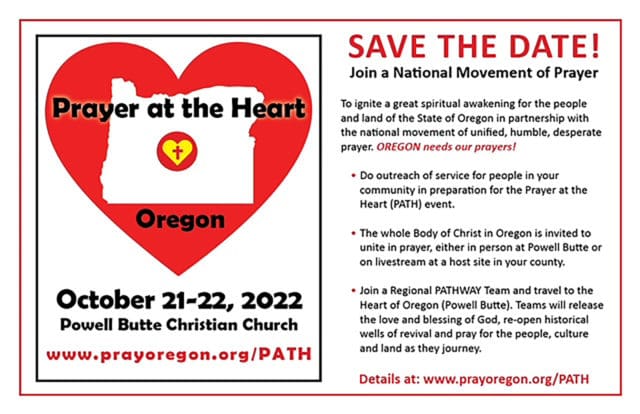Editor’s note: After the first time I heard Greg Simas speak on the Ekklesia, I walked out the room stunned, and my husband turned to me and exclaimed, “man, he sure baked my noodle!” What followed in our hearts was a whirlwind of renewed hope, joy, and inspiration of what we’ve come to believe “can be” instead of bewilderment of what “has been” in the Ekklesia. Greg Simas is the Founder and Senior Leader of Convergence House of Prayer in Fremont, California, and he came to share with us his discoveries on the Ekklesia at the recent Connector’s Meeting in Turner, Oregon. Below is an article worthy of attention. Warning, it is weighty, so don’t rush through it. Let it sink in, and I’m sure you’ll find hope and relief as well.
Nov 6, 2017 By Greg Simas
Why Did Jesus Choose the Ekklesia?
At the birth of Jesus, there were three major institutions: the Temple, the Synagogue, and the Ekklesia. We are familiar with the Temple and aware of the Synagogue, but we know virtually nothing about the Ekklesia, and yet the Ekklesia is the redemptive agency Jesus assigns to us to carry on His mission to disciple nations.
The Temple and the Synagogue
The Temple goes as far back as Solomon and is traced through the Old Testament as the place where God’s presence dwelt and sacrifices were offered.
The origins of the Synagogue are obscure, but most would agree that they started springing up around 300 BC as places within cities to maintain Jewish community, teachings, and traditions. The Law was read, prayer and worship were offered, and Jewish people connected relationally in synagogues.
While there was one temple, centered in Jerusalem, there were hundreds of synagogues scattered throughout the Roman Empire. We read that Jesus and the Apostle Paul ministered in both the temple area and these synagogues.
So why didn’t Jesus choose either of these to build His “church”? Why would he choose the Ekklesia over the holy, presence-centered Temple and/or the synagogues which were well-established in practice and present throughout the Roman world?
The Ekklesia
The third major institution was the Ekklesia. The Ekklesia dates back to about 400 BC when the empire was ruled by the Greeks. The Greek Ekklesia was established in every city as an assembly that governed and legislated. Ekklesiaes were made up of people who were duly convened to create and expand the Greek culture within the empire.
When Rome conquered the Greek Empire, they adopted the Ekklesia and expanded its power and influence. These Ekklesiae also became vehicles for cultural colonization of newly acquired territories.
Roman Ekklesiae were deputized by the Roman Emperor for his will to be done where the Ekklesiae were to be sent.
“The Ekklesia was understood to mean both the institution and the system by which territories were governed by selected local leaders who had been infused with the culture and customs of Rome to rule on its behalf” — Ed Silvoso.
Why then did Jesus choose the Ekklesia?
Jesus could have established the temple as the place where His glory would be released and/or could have stated that He would build a worldwide network of synagogues for every tribe and tongue, but He didn’t.
The temple/synagogue functioned in buildings that members had to go to on specialized occasions, whereas the Ekklesia was mobile, operating 24/7 in the seven mountains (spheres of culture) of a city for the purpose of busting down the Gates of Hades and destroying the works of the devil, transforming people, cities, and nations.
Moreover, Jesus viewed the Ekklesia as an assembly of his people who had become members through conversion. He established that if even only two or three gathered in his name, the government of God was present!
By selecting the Ekklesia instead of the temple/synagogue, Jesus chose a structure better suited to succeed not just in religious Israel, but also in pagan societies. His ultimate goal was not to expand religious institutions, but to penetrate the Gates of Hades by inserting the leaven of His Kingdom into their culture through His Ekklesia.
It’s important to note that within Christ’s Ekklesia he keeps key elements of both the Temple and the Synagogue. Jesus carries over the indwelling presence, prayer and the worship of God from the Temple and the scriptures and fellowship from the Synagogue.
Also, it’s worth noting that in the Gospels, Jesus did not speak much about how to build a church, or plant churches, because he had the Ekklesia in mind from the foundations of the world.
Jesus as the Ekklesia!
Just reread the gospels through an Ekklesia paradigm, and you will see that Jesus lived an Ekklesia lifestyle. His ministry flowed out from is identity as the Ekklesia.
He left the Kingdom of Heaven to bring His Kingdom to Earth.
He destroyed the works of the devil, making wrong things right from Heaven’s perspective.
He legislated, administrated, and demonstrated the Kingdom of God through prayer, signs, wonders, deliverance, and miracle-working power.
He did not confine himself to certain structures. He was in homes, businesses, synagogues, the temple, and on the streets.
He talked to Jews, Romans, Pharisees, tax collectors, prostitutes, the forgotten, the broken, the rich, and the poor.
His influence far exceeded the religious culture in touching every realm of society.
He served and loved others while being fully anointed by the Holy Spirit.
He wasn’t institutionalized but revolutionized everyplace he went. He was salt. He was light. He was yeast. He was a reformer. The Son of God. The Christ.
Jesus was unstoppable!
Jesus is the eternal Son of God who lived as the Ekklesia, as His redemptive agency, legislating heaven to earth, and He is calling us to do the same. Jesus does not want us to “settle” for just “doing church” but to be His Ekklesia, His called-out ones, who legislate heaven to earth, bringing His Kingdom everywhere.
Why the Ekklesia?
It’s Mobile – Where two or three are gathered, anywhere!
It’s Cultural – It impacts every part of society.
It’s Normal – It functioned as a lifestyle not an event. A normal part of life.
It’s Influential – As yeast influences the dough, so the Ekklesia influences culture.
It’s Relational – People-centered, not building-centered.
It’s Responsible – Everyone has an assignment. No consumers.
It’s Reproducible – Paul can be in Philippi one week and leave an Ekklesia there. Ekklesias reproduce quickly.
It’s Reformational – Changed lives, changed families, changed cities.
It’s Moral – Kingdom moral-code was the glue that held it all together.
It’s Governmental – Legislating and administrating through prayer, power, service, and love.
It’s Powerful – Signs/Wonders/Miracles/Healing/Deliverance.
It’s Unstoppable – Turning whole cities upside down for God’s glory.
We are left with a choice, do we continue to “do church” as usual or do step into the fullness of becoming the Ekklesia? It’s our choice.
Subscribe to updates from Pastor Greg Simas and view additional teachings, as well as order resources on his website.
http://gregsimas.org/ekklesia-series-prayer-the-number-one-functional-priority-of-the-ekklesia/




